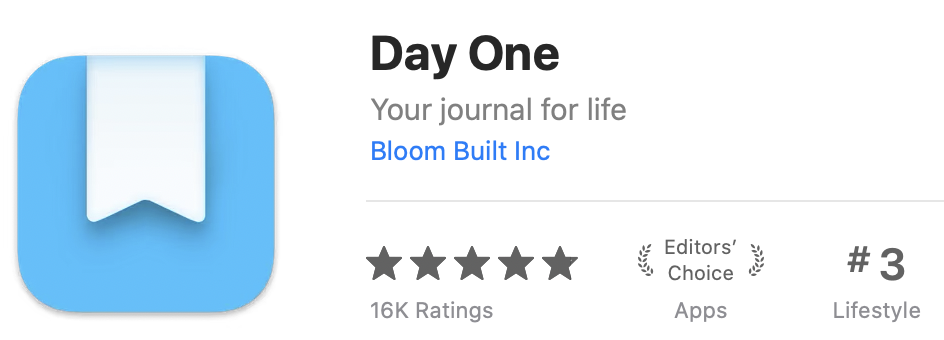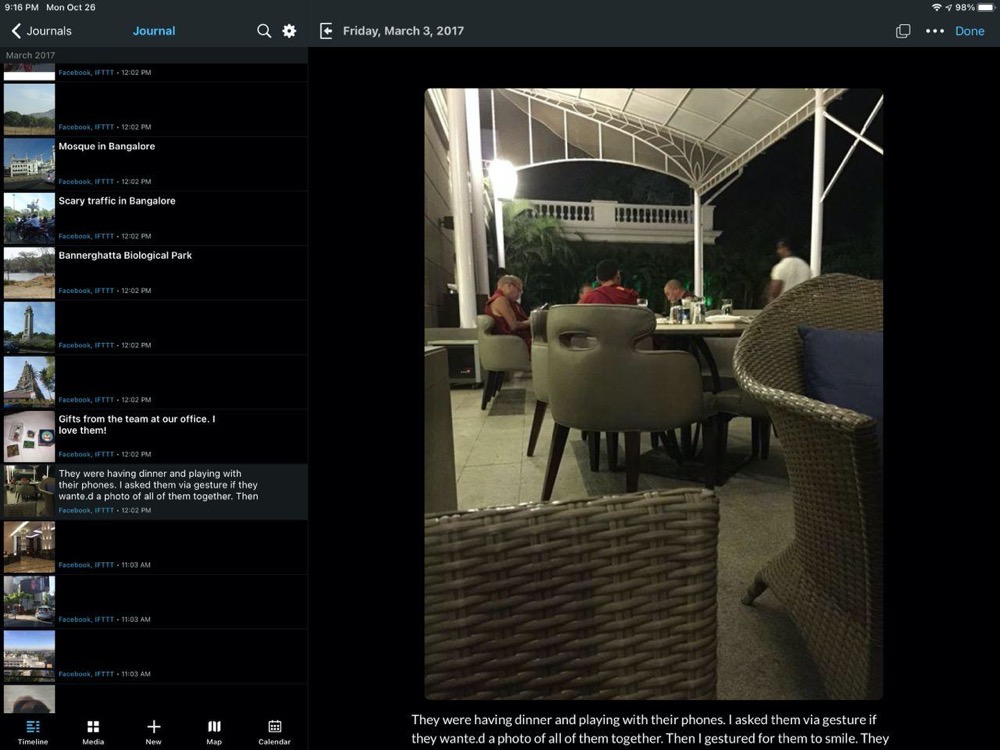
Hi, this is Jill from the Northwoods.
Today we’re going to talk about diary apps, or journaling apps, however you like to call it. There are some really good journaling apps out there in the world, particularly when you’re talking about the iOS world.
I started with Day One back in 2011, when it was released. Almost day one, so to speak. I’ve always wanted to be more serious about journaling than I have. And Day One really got me to that point where I could start doing it, because it was on my phone and my phone is with me all the time. I tried journaling back when I was a kid, with all my 12-year-old angst. I talked about how that boy in class didn’t like me. And why was I the only girl who read Scientific American?
I have given up on any desire to do any sort of diary like that. When you think about diaries, that’s what comes to mind. Honestly, there are a lot of purposes for journals. So, I don’t want you to roll your eyes when you think about journaling and you hear about all the different trends of emotional journals or gratitude journals. There are a lot of reasons to have a journal.
You could write a book journal, which reviewed every book that you read. Or a Bible or prayer journal, some type of spiritual journal. A photo log, so your favorite photo of the day can be captured in this journal, and you could reflect back on it. There’s also the health and exercise and pregnancy kinds of journals so you can keep track of how you feel each day. What worked and what didn’t work. Social media collections, so you have a place to gather all your social media posts in one place.
Goals and productivity are another reason why you might want to have a journal. Some people have a work journals. A hobbies journal. I keep a personal quotes journal where I keep all the quotes that I really like to have. Some like to keep reviews they write in a journal format, whether it be restaurants. I saw one for beer, and another for whiskies.
Don’t think of journaling in that same sense that I think we’ve always thought about “Dear Diary”. Think about it in the sense of being able to record your time or your experiences.
One thing that it has done for me over the course of this pandemic, is it gave me some perspective when it came to traveling for work. I travel a lot for work, and I’m gone from my house about 25% of the time. But since I’ve been home, I’ve really thought I’ve enjoyed being at home. And what if I don’t like traveling as much as I think I do?
While reflecting in my Day One journal, I’ve been able to look at all the amazing experiences I had while traveling for work. I’ve gone to baseball games and football games, and Disney World. I have gone to New York City and seen two Broadway shows. Things that normally would be expensive vacations, or big experiences, like going to the Olympic National Forest for a weekend were easy for me because I travel for work.
And I’ve met amazing people too! Because I gained perspective from my journaling app, it helped me realize that I like traveling for work a lot more than I seem to remember that I do. Sometimes it’s easy to think back about all the missed flights and weird hotel experiences. This journaling helped me to have a better picture about something that was giving me a negative opinion.
Day One
So, I’m going to talk about three different kinds of journaling apps, and maybe one of them
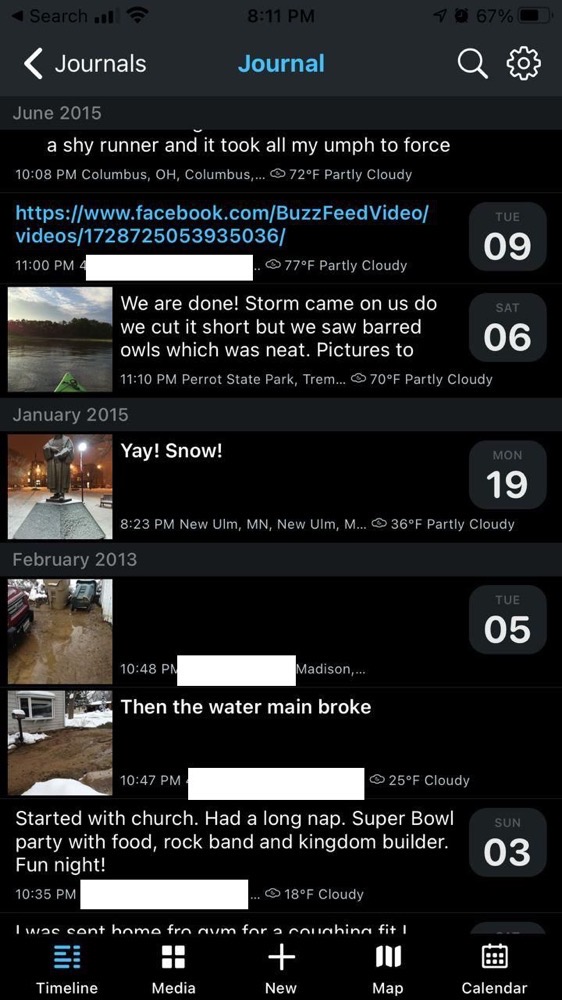
would be something that would fit you.
The first one is the big one, which is the Day One journal. It has been around since 2011. And I joined them quickly after they became an app. I’ve been using them very sporadically for a long time. And it’s really pretty funny. It is really the most comprehensive journal out there.
When you have a company that is just focused on one thing, and they take deep consideration about what their user base wants in a diary, it becomes amazing. And so, the first thing to talk about is that it has end-to-end encryption and passcodes. Security is a big deal particularly if you want to have a journal.
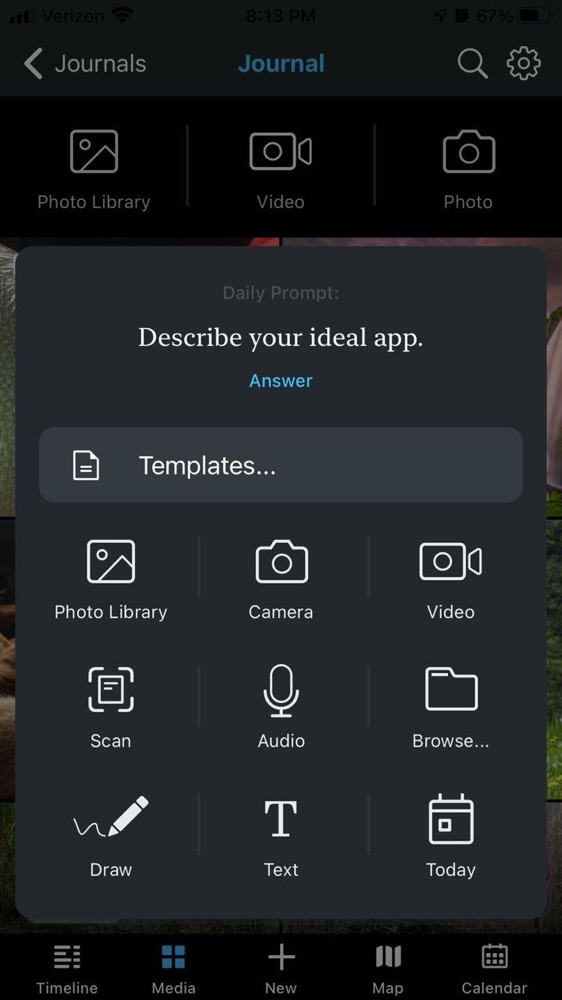
As a 12-year-old girl, I had a pink diary with this fake padlock on it that any pen could open. That doesn’t work for security! Do you think I could trust that anything I wrote in there would be private? I ended up burning that thing because it was just horrible.
But with this, you can feel rest assured that there’s a lot of security built into it. There are also methods of backing up your data. You can also export it in a PDF, or get fancy books printed from it. It’s really amazing where Day One has come with their software. From the very beginning, it was always good, now is so much better.
The one thing to keep in mind, if you do get started with Day One is the end-to-end encryption is not turned on by default. Also, if you lose your key, you will not be able to decrypt your diary at all. All you can do is recover data that is stored unencrypted in iCloud or restored from another location.
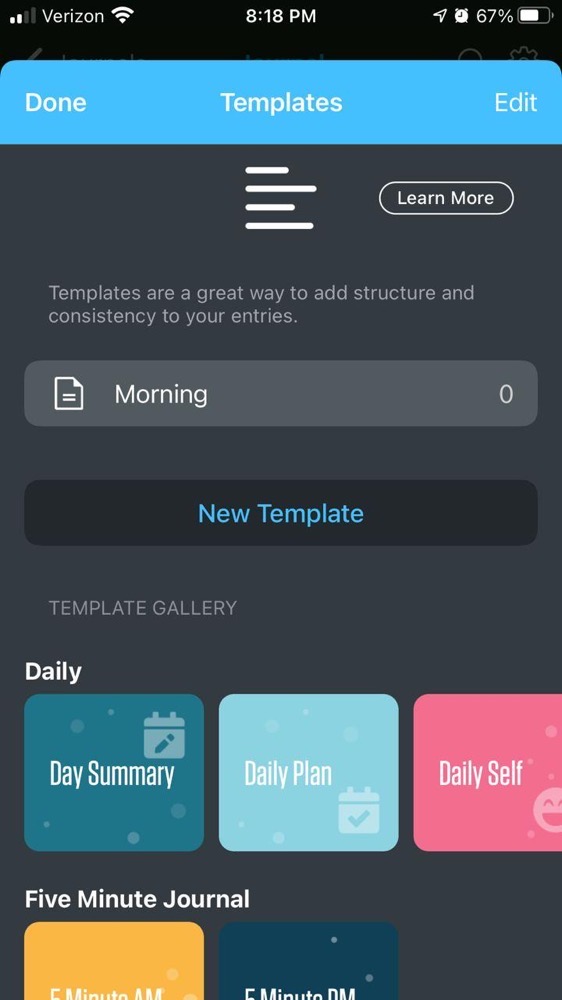
So, when it comes to features, we could go on this entire podcast talking about all the features that Day One has since they have just so many, I’m just going to cover a few that I thought were pretty important.
First of all, besides the fact that you can write entries and text, and you can also do video, and audio and it’ll do audio transcription. There are so many ways to get a journal entry into the system.
But there are also templates in there. And the templates have prompt questions. So, it comes with a few of them, but you could write your own. I wrote one to encapsulate what I thought was going wrong with my sleeping. I talked about the sleep tracking a while ago. This was more of a paragraph that just described my night of sleep, and why I was having such troubles. Also, I have really wild dreams, and I write those down as well. I created a template that allows me to track these very questions that I’m looking for data.
You can also set notifications based on your template so that every morning I’m supposed to fill out my morning template and at the end of every workday, I can fill out a work journal. The reminders are fantastic and a way of remembering just to go ahead and fill out these templates, or any entry in your notebook.
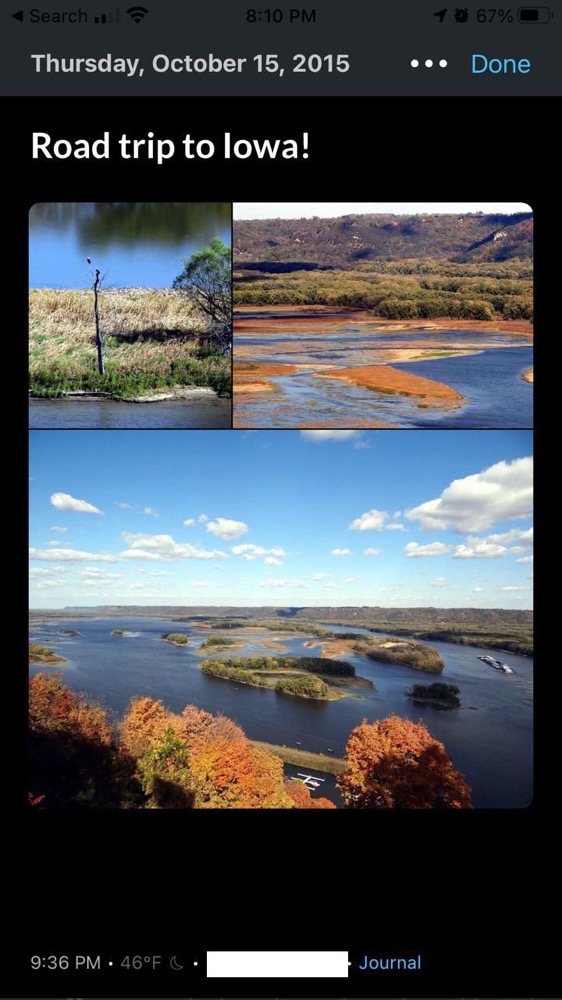
There’s also a really great feature where it says “On This Day”, and it’ll show you what you did a year ago. I just saw it the other day. And it said a year ago, we had a couple of inches of snow. I was really excited about that. I really just enjoy what this does to bring me back to previous entries and remind myself of the past.
You can also use Apple Shortcuts to create Day One entries. It sounds from people who do this that it might be a little bit more complicated than it needs to be. The phone app is very easy to use to get photos, speech, video into your diary. It understands fundamentally that this is a portable diary. It also has an Apple Watch app to also can help you get audio or text version of your entry into your diary from your watch.
There’s also a Mac OS version of the app, which is great. It has a bigger view and a little bit better filtering that goes and more room and landscape mode so that you can see the entries better. One of the reasons I was really excited to get a MacBook is that it would give me the full power of Day One.
Like I said, I’ve been using it for almost nine years. And this ability to clean up some of it and organize it a little bit better, was just really neat for me. It does have integration with Instagram. Also If This Then That, which will allow you to create anything that If This Then That can pull in and put into your journal. Again, it can do dictation and transcription. There’s now a widget for iOS 14, it does markdown and integrates with Text Expander on iOS. It also syncs across all devices.
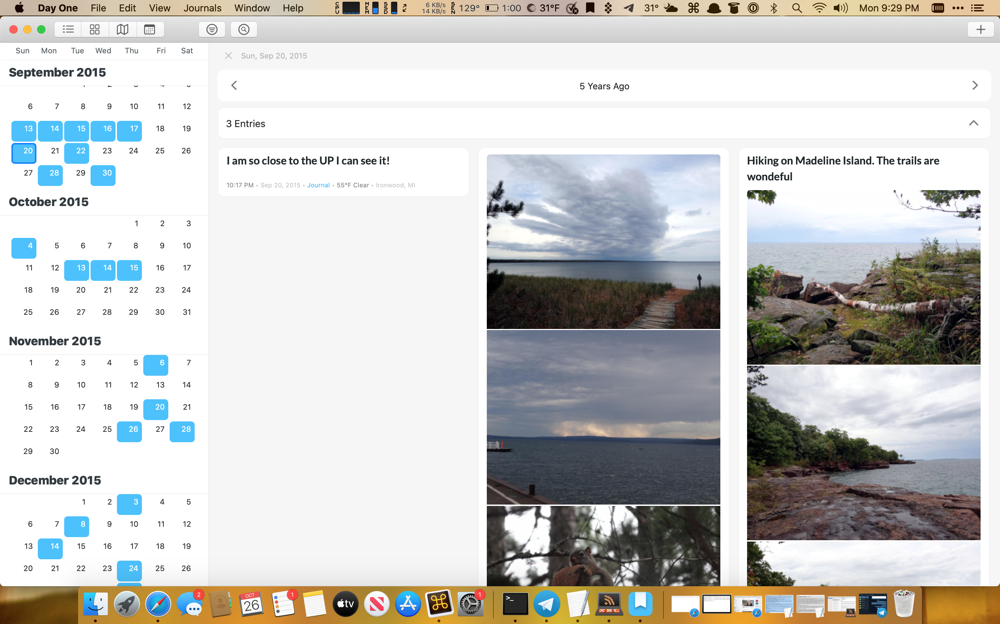
It’s really just great. I can’t think of a lot of things that I would love in a diary application or a journaling application that Day One doesn’t have. There are premium accounts that are needed if you want some of the more advanced features.
You will need a premium subscription if you want to do backups, syncs, multiple journals, multiple photos per entry, video and audio recordings, embedded PDFs, scanning, drawing, automatic entries from Instagram and health data.
There’s a lot of really good things in that premium account, which comes in at $35 a year. This is where people really complain about the app more than anything else. The app is available on iOS, Apple Watch, and Mac. The app is free. More information is available on their website at www.dayoneapp.com/.
Momento
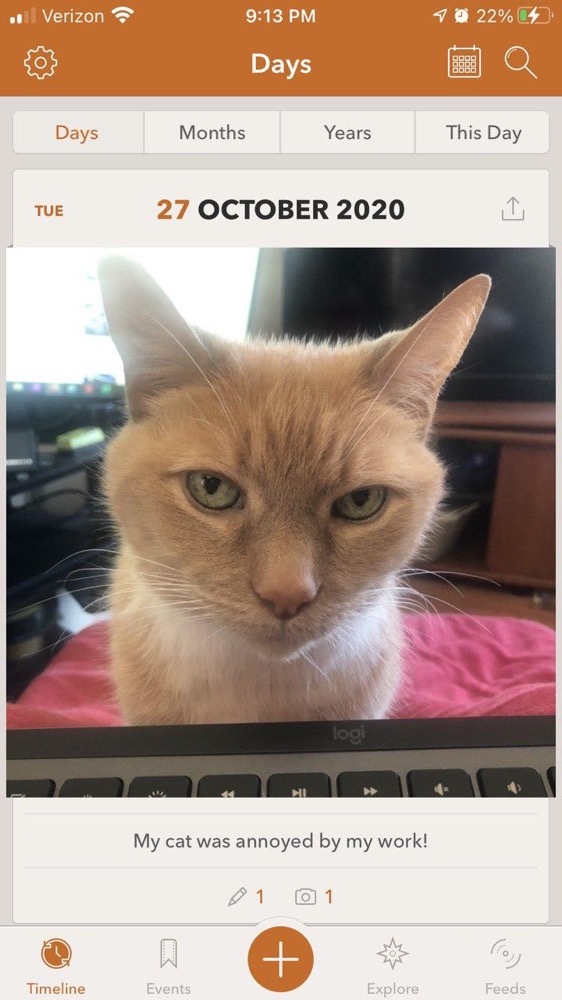
The second app I want to talk about is called Momento and I also got started with this app a long time ago, probably in 2011 when they also came out. And it was interesting because back in the day it was more like having your own personal Twitter feed.
It wasn’t really meant to have these big entries with lots of details and different things you could do. It was really meant that I want to just get in there, write a few quick short sentences, add a photo, maybe and be done with it. But over the course of years, they’ve really grown into a much bigger project.
They first started getting involved with integrations so that you can integrate this with Facebook, Twitter, Instagram, Flickr, YouTube, Spotify, Medium, Uber, Goodreads, and web RSS feeds. There is no Mac application for Momento. It is only really meant to be on the iPhone and the Apple Watch.
It does have a lot of the same features that you would expect in Day One, where you can put an entry in. You can record some audio. You can put some video in and basically tag some of these entries. And the subscription gets you more than one journal book/feed and you can put more than one photo per entry, and you get a plain text export. There’s a little bit of formatting with bold and italics when it comes to the main entries. The subscription is $4 for a month or about $17 for a year.
Again, it’s a good app and I think that if you’re someone who’s more heavily involved in social media, and really want to aggregate all that social media data into a journal, and that’s important to you, Momento is really the way to go. And you can do these things without using If This Then That integration. Find out more at https://momentoapp.com/.
Moodnotes
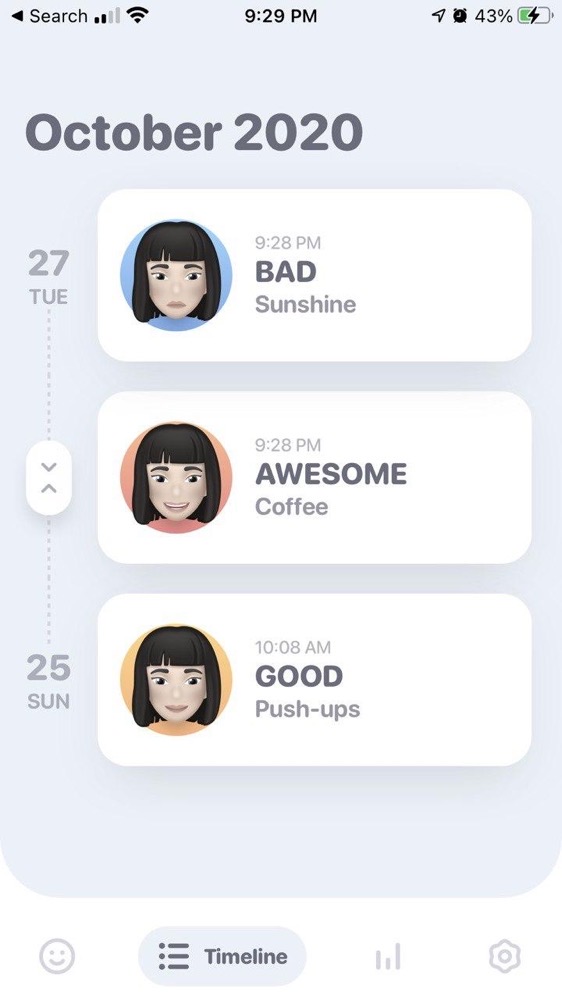
The last app is called Moodnotes. And this one is interesting. It’s the only app that’s been reviewed by the Academy of Cognitive Therapy. It is considered to be a cognitive behavior therapy device and it was written for that purpose of trying to help people figure out where some of their emotions are coming from.
There is an iOS app and an Apple Watch app, and there’s iCloud sync backup. If it seems like it’s too much to do these other journaling applications, Moodnotes is about picking a mood. Very, very simple. That’s all you really basically have to do. I’m awesome right now. I’m okay right now, I’m terrible.
The journaling just involves at that point selecting the mood, and you can stop right there. But if you really want to, you can go on and start including things like why do you feel that way? What exactly is this mood about? Then it can go on to give you some tagged words that go along with the mood that you picked.
Can you expound on that? What were you doing? Were you at home? Were you with friends? Were you lonely? Were you ecstatic? Are you grateful? Try to explain exactly what your mood means, with some additional words and some additional tags.
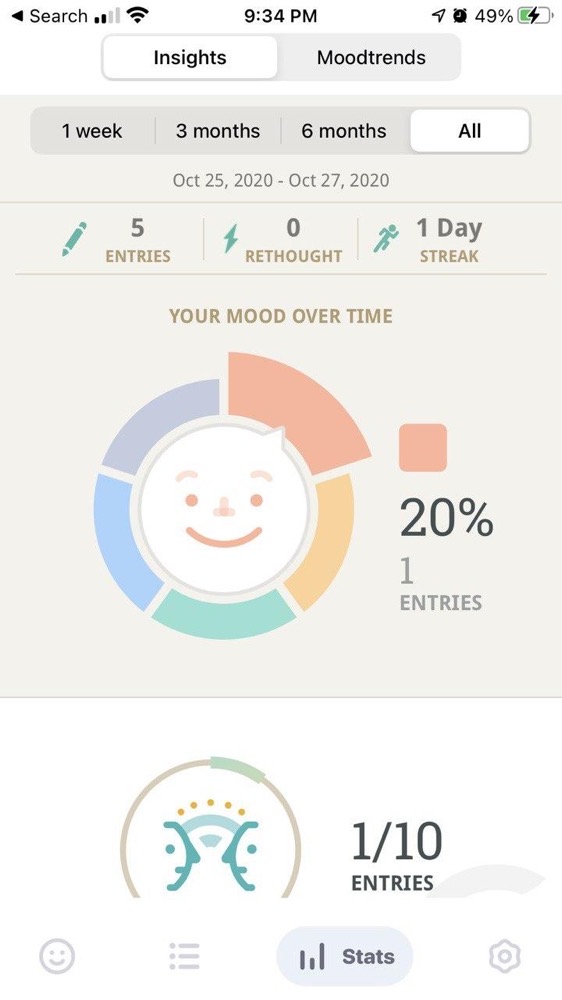
Once you’ve tagged this mood, then there’s just some bars on there that you can increase the intensity of it. If you’re saying you feel awesome today and you say that’s because you were hanging out with friends. Then you could go into the individual pieces of it and say ‘it’s because I’m just so grateful for my friends. It’s also because we had a lot of fun, you can start going ahead, scaling all the individual feelings that you’re having if you want to. Then you can go on beyond that.
If the mood was negative, it also gives some common traps that lead to negative emotions, like “blaming other people” or having “all or nothing thinking”. And if you have a bad mood, you can go ahead and start listing which of the traps you might have fallen in.
This tool is not just to record your mood. It is also meant to be a tool for someone who’s having some bad moods to be able to figure out what’s really going on. Am I upset at work, but happy when I get home? Maybe it’s the other way around? These charts are there so that you can help identify those moods, figure out when they’re happening.
Once you start accumulating data, then they have something they call a Moodpie. And the Moodpie is just a pie chart with all the different moods. So, 70% of the time you’re happy, and 5% of the time, you’re terrible. But it just gives you a good oversight into what your daily moods are like.
Then there are some advanced statistics on another tab that shows you bar graphs of each of the individual moods, and how much they played a part of your day. Find out more at their website at https://thriveport.com/products/moodnotes/
Daylio
There’s another app that we won’t review, but it’s similar called Daylio. It has the same functionality with moods and charts and tags but is more for journaling and not clinical use. You can find out more about it in the App Store, Daylio. https://daylio.net/.
These are three different apps for three different use cases. I think that journaling, whether you’re doing it in our emotional side of things, or just doing it on an event type of basis, or just having a place to aggregate all your social media is a really great way to do things. I’ve really enjoyed the journals I’ve created. And I was really excited to be able to look at them in the MacBook. I think after this review, I’m actually going to expand the journals I do and start having a photo diary as well.
I hope you enjoyed it. Just remember to stay subscribed, enjoy the podcast, and tell your friends about it. Thanks so much.

